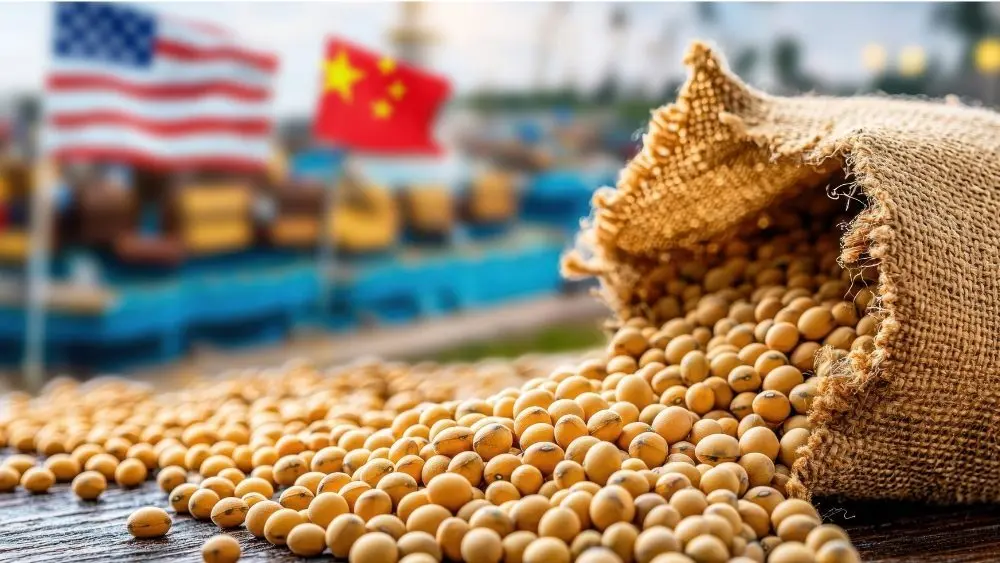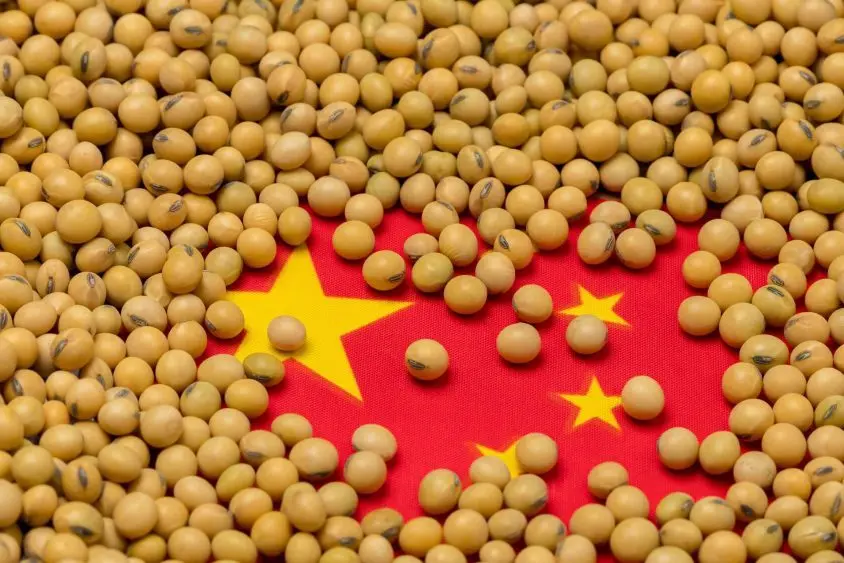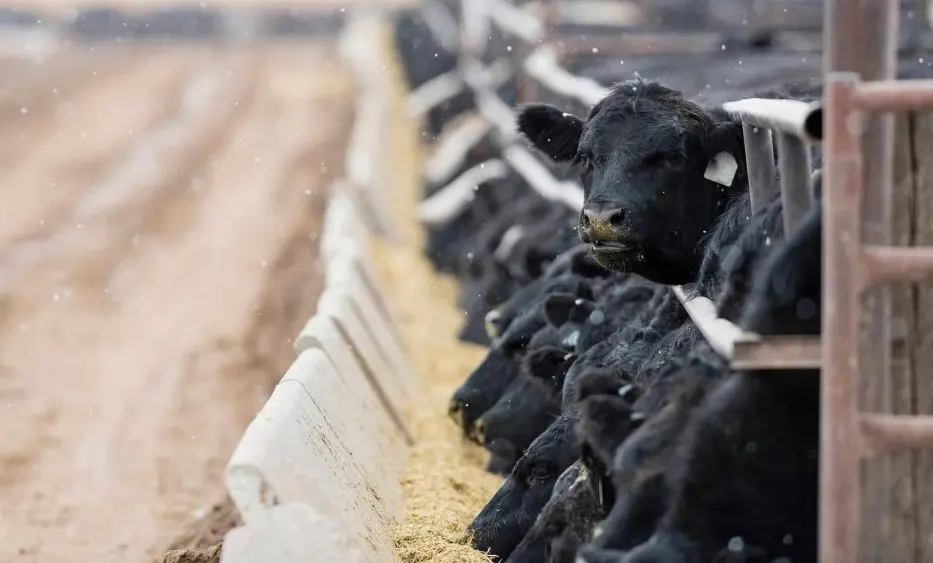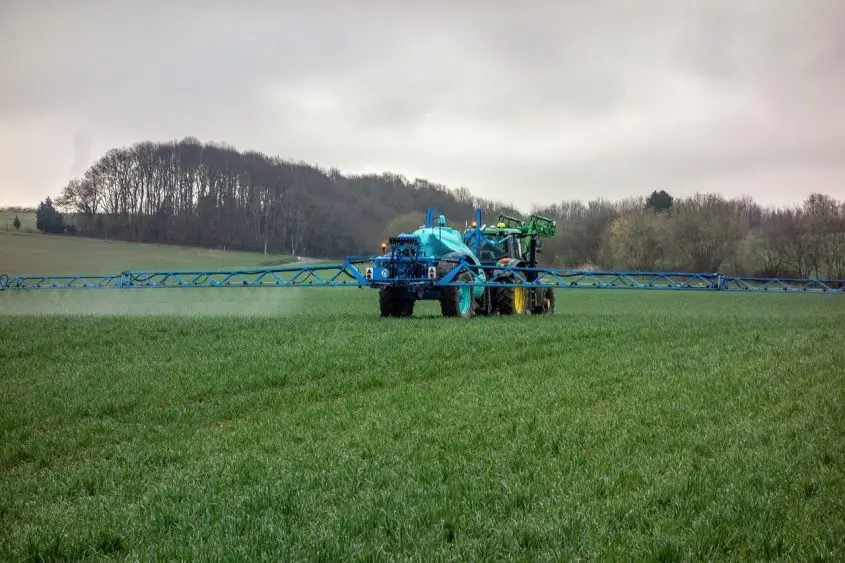(FARGO, ND) – As China remains absent from buying U.S. soybeans, many producers in the Northern Plains and northwestern Corn Belt are facing a growing problem as we get into harvest season. Cash basis for soybeans in many areas continues to crumble well below the futures price on the board leaving producers with few options this fall.
“We’re starting to hear from some of our members who are really starting to be concerned about where they are physically going to put the soybeans come harvest,” according to Justin Sherlock, President of the North Dakota Soybean Growers Association. “We don’t typically store a lot of soybeans historically. We put them on a shuttle train at the elevator and send them out to the PNW right away. So we’re starting to hear from members. They’re concerned. Some elevators say they’ll take some. Some elevators are saying they might turn people away.”
Amid the on-going trade dispute with China, they have yet to purchase any new-crop U.S. soybeans with the new marketing year having started on September 1st. Mike Zuzolo, President of Global Commodity Analytics, says the lack of a China deal is really starting to hurt basis levels.
“When it comes to the areas that are impacted by the Pacific Northwest bean export market, i.e. the China export market, it is starting to really get painful. And I have heard basis levels that are even getting us into an $8.50, an $8.25 cash bean price in parts of the Dakotas”, says Zuzolo. “But you can see whether it’s Aurora, South Dakota, New Ulm, Minnesota, or Dubuque, Iowa, you’re seeing a basis level, it’s really starting to plummet here since mid-August. And you’re going back towards those levels seen in late 2022 and also late 2018. Recall 2018 was the last time we really got shut down with the soybean exports to China.”
Jim Thompson, Chairman of the North Dakota Soybean Council, calls this uncharted territory for many soybean growers in his state amid the on-going trade dispute with China and lack of demand heading into harvest season.
“We spent the better part of 40 years developing these relationships with Southeast Asia, and then in turn developing our infrastructure in North Dakota to be the most reliable, efficient shipper of whole soybeans to markets like China and Vietnam and Southeast Asia and Indonesia and whatnot,” says Thompson. “But China is the big elephant in the room, if you will. And 80% of North Dakota soybeans used to be exported through the P&W to Southeast Asia. Now with the addition of two crush plants, that’s more 50-55%. But China accounts for the majority of that. There’s nothing that could take the place of China.”
Thompson added that “it’s a totally different shift of thinking for us at harvest this year when the basis is screaming at you that, hey guys, you can’t bring these beans in. We have nowhere to put them. We have nowhere to take them. And you can’t really blame the elevators for that because they don’t have an outlet for them. And unfortunately, of course, with the storms we’ve had this summer and the lack of storage and the numbers we’ve seen is anywhere from 10 to 12 to 14 million bushels of storage is out of the equation right now. So yeah, it’s just uncharted territory for us this year.”
The severe weather over the summer that Thompson alluded to, particularly in North Dakota, is another issue that many producers feared could compound the problem of potentially low prices at harvest. But for Sherlock, he didn’t quite see this coming.
“Honestly, when we spoke a while back about that, I don’t recall if we even talked about storing soybeans,” said Sherlock. “At the time, we were just saying, how are guys going to store their corn crop if their facilities are out of commission? And now, here we are having to plan to store soybeans.”
Sherlock added that the last time we had a trade war in 2018, a lot of producers in his area stored soybeans in small 3,000-5,000 bushel bins that “our grandparents built generations ago. We haven’t used them for a long time, but they come in handy.” However, the summer derecho event wiped out most of those bins in his area.
“Soybeans, historically, are what paid the bills in the fall,” according to Sherlock. “You sold soybeans in the fall to cash flow, to make your land payments, your equipment payments, prepay for inputs for next year. It’s just changing the dynamic significantly. And boy, 2026 could be a real problem going into that too. So if we don’t solve this soon, and if we don’t get China back in the market, what could be hopefully a short-term problem that we can hopefully resolve and work through, this could turn into a multi-year surplus of crops that just is going to be really hard and lead to a major downturn in the ag and rural economy. So this is a really big deal to get these trade deals sorted out.”
Thompson added some optimism for producers as they stare down this current situation. “I would just encourage producers to not give up yet. You know, keep looking for opportunities. Keep your ears open,” said Thompson. “Always be looking at something maybe you’re not used to doing and you might just have to do it this time. And if it’s something that works out, might be something you adopt in the future as well. But be open to something different because these times just call for a totally different approach to the way we do things.”
“And we’re farmers. We adapt. That’s what we do,” according to Thompson.
Watch the full interview with Sherlock and Thompson below:





